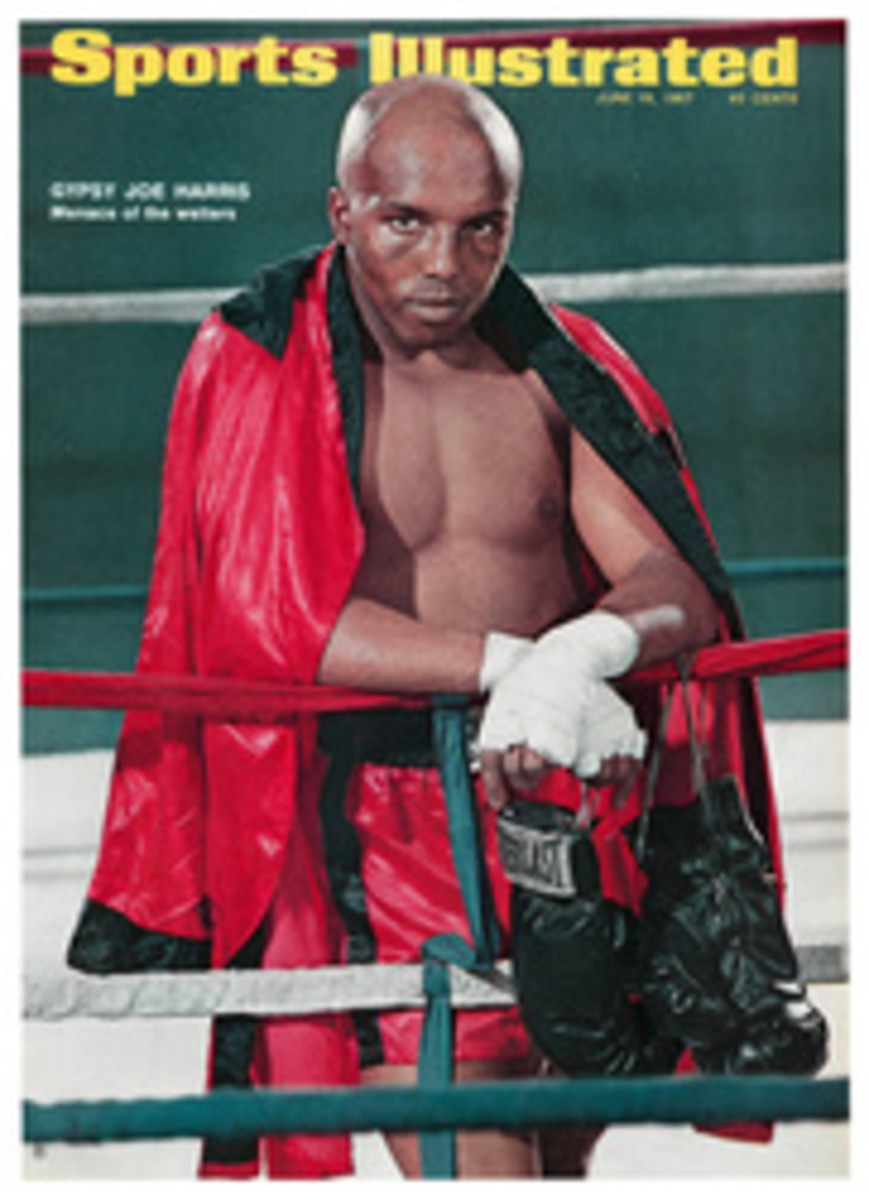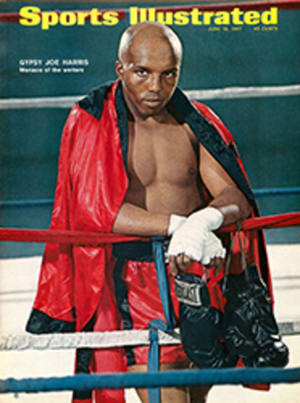
New kind of numbers game
Come a little closer and let me tell you about George Brunet. George is 32 and has been pitching professionally for 14 seasons. He has worn 22 different uniforms, and that should tell you a little something about the guy. Brunet has been paid to pitch in places that only Doc Kearns ever heard of before: Shelby, Hot Springs, Abilene, Crowley, Seminole, Columbia—places like that. George once said that his three kids never stayed in one school long enough to learn the teacher's name. But George's life has been a bit more stable recently: he has been with one team, the Angels, for four seasons. And that may be because he has something special working for him now, something he demonstrated again last Friday night in Anaheim.
Perhaps you remember when certain pitchers built reputations as Yankee-killers. Frank Lary was the best known, but there were others, like Ellis Kinder and Willard Nixon. George Brunet is a Tiger-killer. The Detroit Tigers whimper like kittens when they hear George's name mentioned. He has lost to them only twice in his career. He beat them opening day this year, then lost nine straight (once, unbelievably, to Detroit when an Angel outfielder dropped a fly ball). Yet when his name appeared in the papers Friday under Probable Pitchers, gamblers from La Habra to Redondo Beach hastened to their phones to call their bookmakers. "Betting California," they said, "if Brunet." George walked to the mound in Anaheim and threw a three-hit shutout against the league-leading Tigers, probably warding off another change of uniform in yet one more obscure town.
There are several killers currently at work in the major leagues, and their magic over certain teams has held up splendidly this season. Larry Jackson of the Phillies has had a discouraging year, and his record of 3-6 has not been entirely helpful to the Phils, but twice he has been allowed to pitch against his old friends, the Mets, thereby acquiring two victories. Dave Wickersham of Detroit suffered through spring training, was unhappy that he was not being counted on as a starter and, to tell the truth, simply was not pitching too well. But Wickersham is a Twin-killer. All he needs is to stand on Hennepin Avenue in Minneapolis, breathe in the chill northern wind, and he becomes Paul Bunyan. He pitched in relief against the Twins, the Minnesotas blew a double play, and there was Wickersham with the win, his first of the season. Then there are—well, look at the career records (below) of the top seven killers currently at work in each league. (Juan Marichal's 19-0 against the Mets is asterisked because that is a gross mismatch and should not be counted.)
Killer listings are a new statistic in baseball, and so are gamers. Gamers are what the players call game-winning hits. One of this year's surprises has been the resurgence of the Yankees, both in attendance and performance. Much of the stimulus for both is Mickey Mantle, the man everyone said would not be able to play first base. But Mickey has been in more games than anyone else on the Yankee roster, and he has come through with five gamers so far (below).
Downtown Brown, too, is big on gamers. Downtown is what the players call Ollie Brown of the Giants, because that's where he hits them. Ollie is a 23-year-old outfielder of enormous potential and almost unlimited gifts; he also has a few faults, one of which is not being able to hit the curve ball. In 1963 Ollie pitched a no-hitter for Decatur in the Midwest League, and one season later hit 40 home runs and drove in 133 for Fresno in the California League. A few weeks ago in a game against Houston, Brown was hit in the face with a pitched ball thrown by Claude Raymond and had to be taken to a hospital to have lacerations on his cheek and lips taken care of. Two days later Ollie was in the lineup against the Astros again. In the ninth inning, with the Giants behind 3-2 and one man on, Brown came to bat. Who was pitching? Claude Raymond. What happened on the first pitch? Downtown, baby. Ollie had another gamer.
Some baseball people put a lot of faith in gamers. Others insist they have little importance as a statistic. In any tight game, the argument goes, a ground ball to the right side that moves the base runner from second base to third is fully as important as the fly ball that scores the man from third with the winning run. Nevertheless, a study of gamers through 1965 and 1966 and thus far in 1967 (as compiled by Gamer Expert Irv Greenberg of Philadelphia) is fascinating reading. Some mighty big names are missing; some relatively unknown names loom big. Look at the chart below that lists the two dozen major leaguers who have driven in the most game-winning runs since Opening Day 1965.
Mantle, with 15, just misses the list, and can be excused because of his frequent absences from the lineup with injuries, but where in the world are Henry Aaron, Felipe Alou and Rico Carty of the Braves, Carl Yastrzemski and Tony Conigliaro of the Red Sox, Al Kaline, Tony Oliva, Deron Johnson, John Callison? Apparently, some hitters drive in runs early while others flourish in late innings, when game-winning runs are more apt to be scored. For instance, the league-leading Cincinnati Reds are playing an exceptional number of one-run games this year (almost half their games have been won or lost by one run), and they played their first 25 at a pennant-winning .600 pace (15-10). Last year they had the worst percentage in the league (.408) in one-run games and finished seventh, but note the batting figures of Cincinnati's four key hitters in the last three innings of games this year. Early in June Pete Rose, whose overall percentage was .332, had a still-solid .286 in the last three innings, and Deron Johnson (.296) went up to .353, Tony Perez (.302) went up to .353 and Vada Pinson (.281) all the way to .438. In other words, the Reds are now coming through in the late innings of tight ball games.
The Cardinals have presented the most sustained challenge to the Reds so far—which is interesting because the Cards, who scored fewer runs than any other team in the National League last year, are doing it on hitting, with a league-leading team batting average that is eight points better than the supposedly hot-bat Pirates. Even more important, the Cardinals are driving in runs this time, taking particular advantage of those opportunities when base runners are in scoring position on second and third. Lou Brock is the leader of the St. Louis revolution. At the time these figures were compiled, he had come to bat with 62 opportunities to drive in teammates from second and third and had come through 38 times, for a run-scoring percentage of .613. Mike Shannon, up fewer times, had only 40 such opportunities but delivered 23 times for a .575 run-scoring percentage. Bobby Tolan, a part-time player, drove in runs 14 times in 22 opportunities for .636, and two full-time operatives, Orlando Cepeda and Tim McCarver, also had come through at or above .500, a high rate of consistency in run-scoring situations.
Brock, of course, is the most impressively improved Cardinal hitter. By June 10 he had 13 home runs and 38 runs batted in; he needed only two more homers and eight RBIs the rest of the season to equal his 1966 season totals.
There have been equally startling form reversals in the American League. At this time a year ago six starting pitchers—Dean Chance of Minnesota, Jim Lonborg of Boston, Earl Wilson and Joe Sparma of Detroit, Steve Hargan of Cleveland and Joe Horlen of Chicago—had a combined won-lost record of 16-27. Now they are 44-13. Lonborg and his Red Sox teammates have New England aquiver, and there is a distinct chance that Boston will have three men in the starting lineup for the All-Star Game (Lonborg, Shortstop Rico Petrocelli and Left Fielder Carl Yastrzemski). Boston up there in the first division is news enough, but the statistic that really reveals the way the Red Sox are playing is the club's 28 stolen bases. In all of 1966 it had only 35.
Finally, in the other direction to some extent, is the situation in Baltimore. The World Champion Orioles are barely over .500 and their pitching is usually blamed for that. But take a look at Brooks Robinson's comparative figures. In his first 50 games of 1966, when he was driving Frank Robinson across the plate almost every time you looked up, Brooks was batting .301 with eight homers and 45 RBIs. This year, after 50 games, his average was .242, he had six home runs and a pitiful 16 runs batted in.
On the other hand, Frank keeps rolling along. Last year after 50 games he was leading the league in hitting (.351) and home runs (14) but was far behind in RBIs (28). After 50 games this year he was first in all three departments (.333 average, 17 homers, 51 RBIs). Only 10 men have won the Triple Crown. Only two—Rogers Hornsby and Ted Williams—won it twice. No one, up to now, ever won it two years in succession. Make room in the Hall of Fame.
[originallink:10537986:42943]

